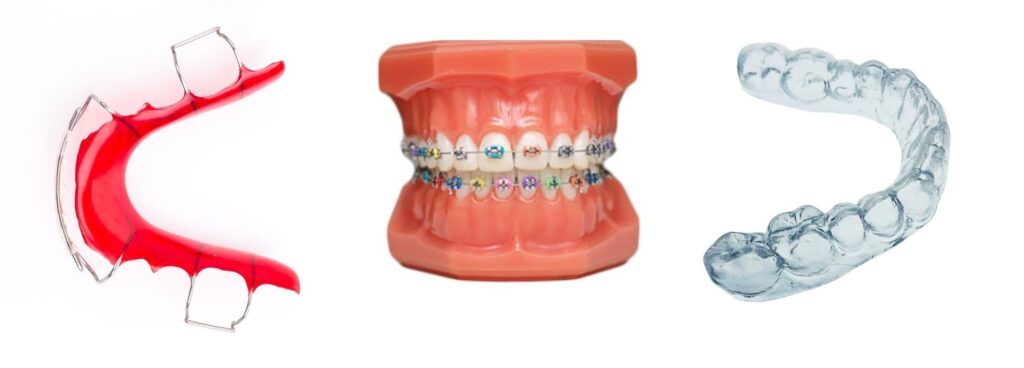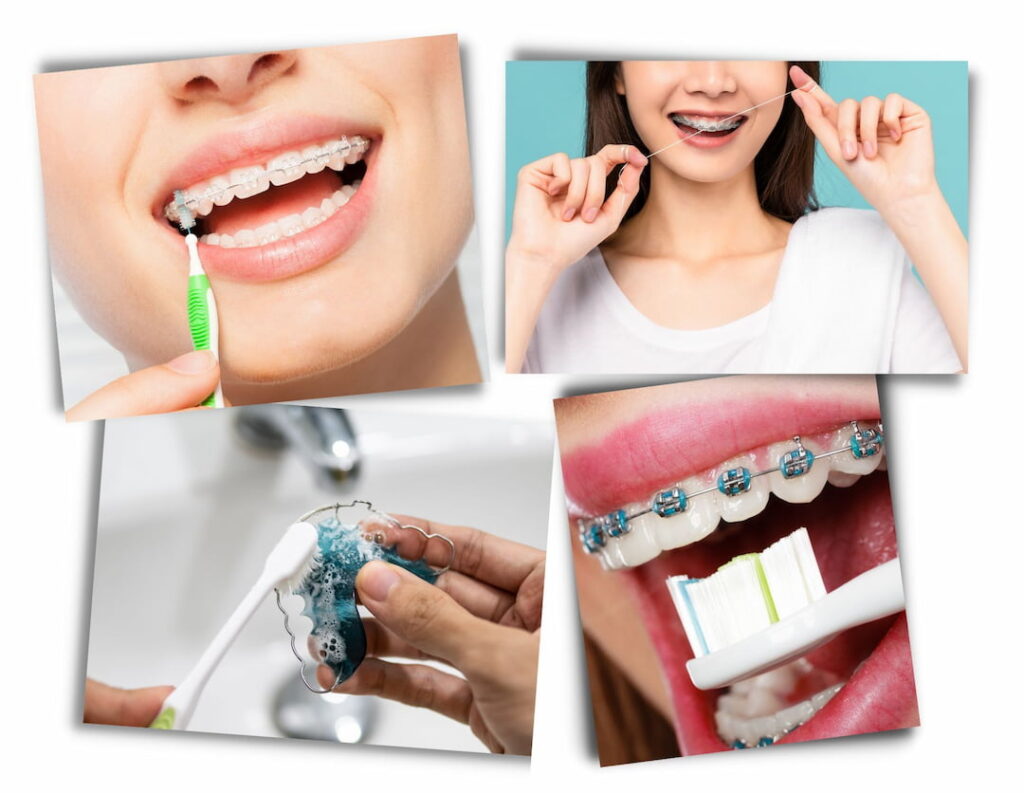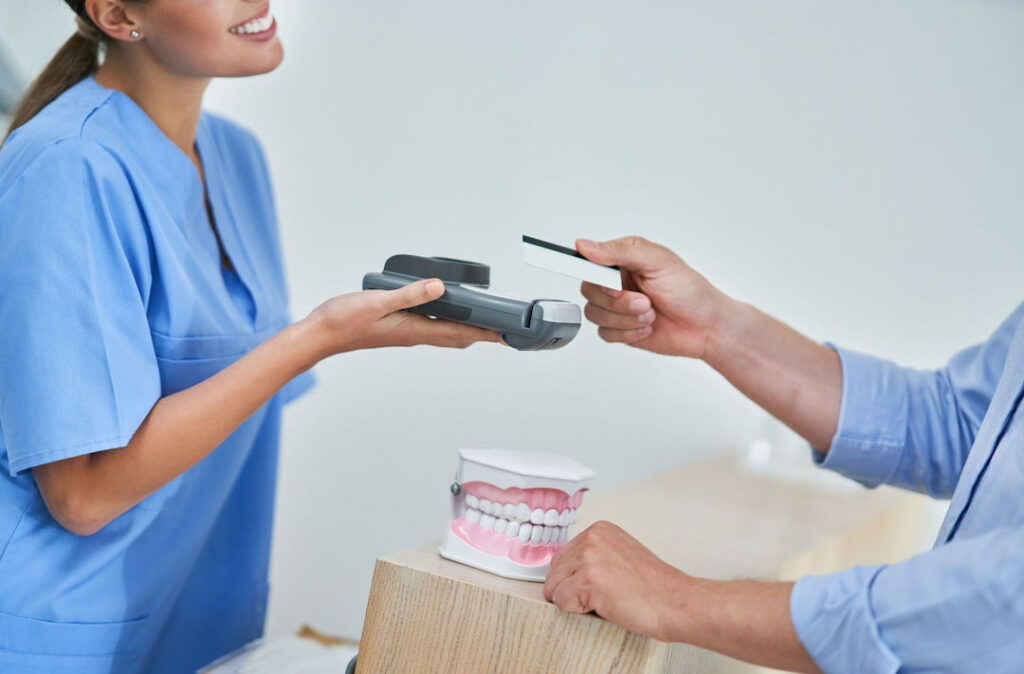
Have you completed your orthodontic treatment by using braces? If yes, the process of treatment doesn’t stop at that.
After removing the braces, your orthodontist or dentist will prescribe a replacement retainer to prevent your teeth from going back to their former position. You can wear the retainer at night as you sleep and remove them during the day.
Retainers are orthodontic appliances that are custom-made to keep your teeth in place after using braces. They can also be used to move your teeth to a better position, and they are made using a special type of plastic or metal wire.
A passive orthodontic retainer is used to retain the new position of your teeth after having dental aligners. Active retainer helps to correct minor orthodontic issues that don’t need braces.
If your orthodontist or dentist prescribes retainers, you may have to use them for the rest of your life along with trusted dental care products that you used to use before braces.
Types of Retainers
You’ll find three main types of retainers. These include:
- Removable flexible plastic retainers (Vivera, Invisalign, Essix, Zendura)
- Removable Hawley retainer (metal wires with plastic or acrylic)
- Permanent retainers (bonded, wired, or fixed retainers)
The removable wire retainers (Hawley Retainer) use wires to exact minimal pressure on your teeth, and they are designed to cover most of your palate. The removable retainers can be tightened if need be, and can also be repaired over time. They are versatile and can be designed using different colors and logos. If you lose them or they happen to break beyond repair, it can be expensive to replace them. They also don’t protect your teeth from grinding.
The clear plastic retainers (Essix retainers) are similar to aligners, and they also work the same. A plastic-type of retainer is an excellent choice for image-conscious users as they are removable and barely noticeable during the day. They also protect against teeth grinding. However, they are not as durable as other types of retainers.
A bonded permanent type of retainer is a popular choice as you don’t require any instructions while wearing them. They are a solid bar of metal that is permanently bonded to the back of your teeth.

How Do You Fit Your New Retainer
When your dentist prescribes a retainer, they will use alginate, or any other impression material to custom fit the orthodontic appliance for you.
Alginate is a thick, chalky substance that your dentist can use to make a mold of your teeth’ new position.
The fitting process for new retainers is not painful.
Adjusting to a New Type of Retainer
Retainers are foreign objects in your mouth. As such, you may expect some discomfort, or your mouth may not function as naturally as before.
You may take time to adjust to the presence of orthodontic retainers in your mouth just like you need to adjust to your new-found smile.
You can expect some adjustments when it comes to speech. For example, if you go for Hawley retainers, you will experience a slight lisp in your speech when you use the retainer for the first time.
After you fit the retainer, you may have to talk more slowly for the first time. You can also practice by trying to read aloud for 10-20 minutes daily to adjust to your new retainer.
The removable retainer can also increase your saliva flow at first, but you’ll adjust to the situation with time.

Why Do My Retainers Hurt My Teeth?
Is it normal for the retainer to hurt your teeth?
After you have your retainer on, you may experience some pain in your teeth. This will be due to the teeth’ ligaments trying to get back to their original position.
Active retainers for dental treatment can also cause some slight pain or discomfort as the teeth move.
When you have your retainer at night as you sleep, you may notice your teeth becoming sore. This is normal as your teeth ligaments were stretched when you had braces on.
The bottom line is that you shouldn’t expect severe pain when wearing your retainer. If you feel that your removable retainer was not fitted properly, you should immediately contact your dentist or orthodontist.
Regardless of the type of retainers you use, the goal is to prevent your teeth from shifting after orthodontic treatment.

How Many Hours Should You Wear Your Retainers?
After getting your retainer, you should have them for at least 22 hours a day for the first nine to twelve months.
After that, you have your retainer every night as you sleep.
Note, after your orthodontist has prescribed the use of a retainer, you’ll be using them for the rest of your life to ensure you retain your teeth in place.
The dentist will also give you specific instructions on how many hours you should have your retainer on. Ensure you follow the dentist’s instructions to achieve the best results and prevent your teeth from going back to their previous position.
If you try to sleep without the retainer, your teeth may shift from their new position, which may require you to have repeated dental treatment.
You can also have the retainer as you do some straining activities such as jogging, mountain bike, or skiing. The retainer protects your teeth from relapsing and also acts as a mouthguard during the activities.
The right orthodontic position helps with better digestion of food, and it also prevents gum diseases and cavities.

What Goes On If You Stop Wearing Retainers?
If you stop wearing your retainer, you may experience mesial drift. Mesial drift refers to the process of teeth shifting.
The longer you have the retainer after removing the braces, the less likely is the possibility of your teeth relapsing to their former position.
Your teeth have a memory of their former position before using orthodontic treatment. The teeth have ligaments that connect them to the bone and stretch when you use braces. If you don’t use a retainer, the teeth will “remember” their former position and try to go back.
A retainer holds the teeth in place, and the memory of the ligaments fades away with time.
Cleaning Your Retainers
Removable Retainers
- Use a stainless steel container and not a plastic one to prevent bacteria buildup
- If you are not wearing your retainer, soak them in distilled water and baking soda
- You should also soak your retainer for 15 minutes in white vinegar once a week
- Use an ultrasonic cleaner for a retainer that doesn’t come clean
- Don’t use polysulfate cleaner as they may cause allergic reactions in the mouth
- You shouldn’t use mouthwash, toothbrushes, or toothpaste as they can scratch the retainer and affect its durability. The scratch may also be a breeding ground for bacteria
Fixed Retainers
- Brush your teeth at least twice a day and practice proper oral hygiene
- Use a floss threader to floss your bonded retainer once a day
- Brush the area around the retainer vertically and horizontally to clear build up around the metal wires

How Much Do Retainers Cost
How much do you expect to part with for your retainer?
For conventional Hawley retainers, they will cost you between $150-poly600.
Additionally, replacing clear aligners such as Essix retainers and Invisalign will cost you between $400 and $800. The cost of the first replacement clear retainer you receive from your orthodontist is included in the cost of the total orthodontic treatment. However, you’ll have to pay for the cost of other retainers separately.
Permanent retainers will cost you between $150-$500 to place or replace the retainer. The cost of placing fixed/bonded retainers is included in the cost of your braces during treatment.
Note, you may pay more for your Hawley retainers and fitting if you purchase from an orthodontist instead of a dentist. A dentist is a broad term referring to specialists who deal with oral health issues, including gums, teeth, jaw, nerves, etc.
On the other hand, orthodontists are special dentists that deal with straightening teeth, correcting bites, and occlusion. As such, orthodontists can be more expensive than dentists due to their specialty.
If you have dental insurance that offers orthodontic coverage, a portion of the cost of your Hawley retainer may be covered. You should check with your insurance company beforehand to determine if they cover and how much they cover.
A clear retainer, including Invisalign, is part of the entire realignment process. As such, you don’t pay for the braces and retainers separately.

One advantage with Invisalign aligners is that you don’t have to visit your dentist to get them. You can make a call and order the replacement retainer.
Note, replacement retainers are typically not covered by your dental insurance. As such, if you damage your retainer or lose them, you may have to pay for a new set of retainers out of your pocket. Other dental insurances may cover one post-treatment retainer, but you’ll have to pay for other replacements in your lifetime.
Ensure you clean your retainers as recommended by the orthodontist or dentist to ensure you don’t lose or damage them. Taking good care of the retainers also helps to prevent bacteria buildup.
When you are done with your orthodontic treatment, your orthodontist will prescribe retainers to prevent your teeth from shifting back to their original position. You will have the retainers for the rest of your lifetime. Some dental insurances pay for the first post-treatment retainers. If you lose or damage the retainers, you’ll have to pay for them.

